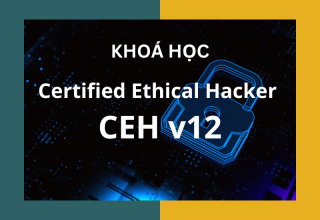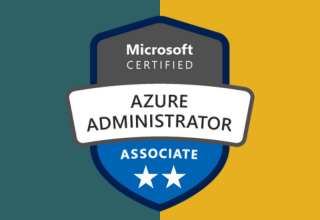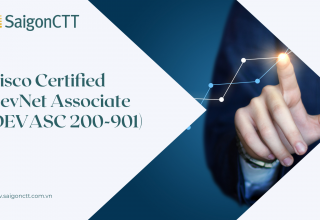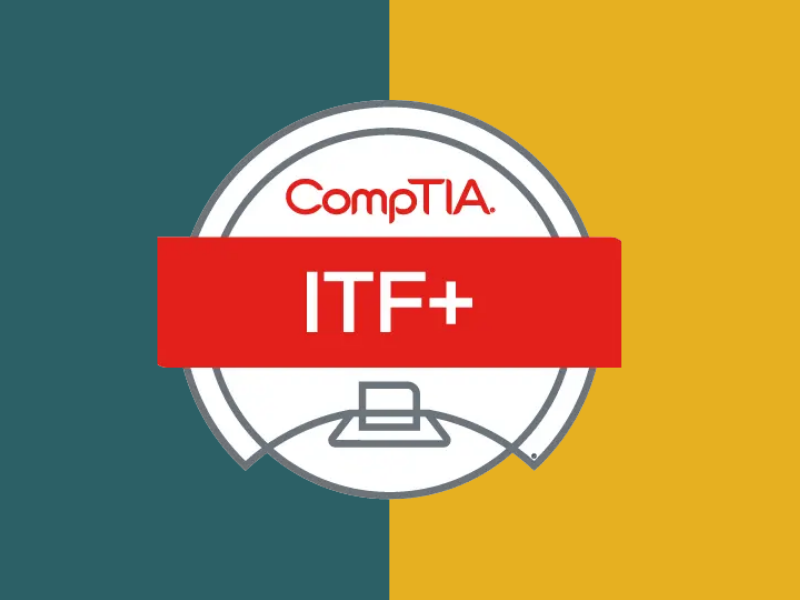GIỚI THIỆU KHÓA HỌC
- Khóa học này cũng sẽ giúp bạn có được kiến thức và kỹ năng để thiết lập và sử dụng máy tính tại nhà / văn phòng một cách an toàn và duy trì hoạt động tốt cũng như cung cấp hỗ trợ không chính thức về PC và mạng máy tính đơn giản cho đồng nghiệp của bạn trong doanh nghiệp.
THỜI LƯỢNG
- 40 giờ
- CompTIA ITF + hướng đến những người đang cân nhắc sự nghiệp trong các lĩnh vực liên quan đến CNTT và máy tính.
KIẾN THỨC ĐẠT ĐƯỢC
Sau khi hoàn thành khóa học, học viên có kiến thức:
- Thiết lập máy trạm và sử dụng các ứng dụng phần mềm cơ bản.
- Giải thích các chức năng và loại thiết bị được sử dụng trong hệ thống máy tính.
- Áp dụng các nguyên tắc bảo trì và hỗ trợ máy tính cơ bản.
- Mô tả một số nguyên tắc phát triển phần mềm và cơ sở dữ liệu.
- Định cấu hình máy tính và thiết bị di động để kết nối với mạng gia đình và Internet.
- Xác định các vấn đề bảo mật ảnh hưởng đến việc sử dụng máy tính và mạng.
YÊU CẦU
- Không có điều kiện tiên quyết đặc biệt để tham gia khóa học này.
- Một số kinh nghiệm sử dụng máy tính sẽ hữu ích.
Completing this course will also help you acquire the knowledge and skills to set up and use a computer at home/office securely and keep it in good working order and to provide informal support for PCs and simple computer networks to your colleagues in business.
CompTIA ITF+ is aimed at those considering a career in IT and computer related fields.
Upon completing this course, the learner will be able to meet these overall objectives:
- Set up a computer workstation and use basic software applications.
- Explain the functions and types of devices used within a computer system.
- Apply basic computer maintenance and support principles.
- Describe some principles of software and database development.
- Configure computers and mobile devices to connect to home networks and to the Internet.
- Identify security issues affecting the use of computers and networks
There are no special prerequisites to start this course. We have made the assumption that you don’t know much about how computers or software work, or even how to use them. Some experience with using a keyboard and mouse will be helpful but is not essential.
Module 1: Using Computers
Module 1 / Unit 1 – Common Computing Devices
- Information Technology
- Personal Computers (PC)
- Mobile Devices
- Internet of Things (IoT) Devices
Module 1 / Unit 2 – Using a Workstation
- Setting up a PC System
- Ergonomic Concepts
- Navigating an OS
- Using Input Devices
- Recognizing Desktop Icons
- Working with Windows
Module 1 / Unit 3 – Using an OS
- Functions of an Operating System
- Types of Operating System
- Virtualization
- Microsoft Windows
- Apple macOS and iOS
- Linux, Chrome, and Android
- File Explorer
- Windows Settings and Control Panel
- Using a Web Browser
Module 1 / Unit 4 – Managing an OS
- Management Interfaces
- Process and Service Management
- Memory and Disk Management
- Command Line Interfaces
- Access Control and Protection
Module 1 / Unit 5 – Troubleshooting and Support
- Support and Troubleshooting
- Identifying the Problem
- Understanding the Problem
- Resolving and Documenting the Problem
- Troubleshooting PC Issues
- Getting Support
- Using a Search Engine
Module 2: Using Apps and Databases
Module 2 / Unit 1 – Using Data Types and Units
- Notational Systems
- Units of Measure
- Data Types
- Data Representation
- The Value of Data
- Intellectual Property
- Data-driven Business Decisions
Module 2 / Unit 2 – Using Apps
- Installing Applications
- Application Management
- Managing Software Licensing
- Productivity Software
- Collaboration Software
- Business Software
Module 2 / Unit 3 – Programming and App Development
- Programming Logic
- Programming Languages
- Programming Concepts
- Object-Oriented Programming
- Scripting Languages
- Application Platforms and Delivery
Module 2 / Unit 4 – Using Databases
- Database Concepts
- Database Structures
- Relational Methods
- Database Access Methods
- Application Architecture Models
Module 3: Using Computer Hardware
Module 3 / Unit 1 – System Components
- Selecting a Computer
- Motherboard Components
- Processors
- Features of Processors
- System and Expansion Bus Technologies
- System Cooling
- BIOS and UEFI System Firmware
Module 3 / Unit 2 – Using Device Interfaces
- Computer Port and Connector Types
- USB and Firewire
- Graphics Devices
- Graphic Device Interfaces
- Input Devices
- Configuring Peripherals
- Bluetooth
- RF and Near Field Communications (NFC)
- Networking Interfaces
Module 3 / Unit 3 – Using Peripheral Devices
- Installing and Uninstalling Peripherals
- Display Devices
- Display Settings
- Multimedia Ports and Devices
- Printer Types
- Installing and Configuring a Printer
- Scanners and Cameras
Module 3 / Unit 4 – Using Storage Devices
- System Memory
- Mass Storage Devices
- Optical Discs and Drives
- Removable Flash Memory Devices
Module 3 / Unit 5 – Using File Systems
- Managing the File System
- Folders and Directories
- File Explorer
- Files
- File Attributes and Permissions
- Searching for Folders and Files
- File Types and Extensions
Module 4: Using Networks
Module 4 / Unit 1 – Networking Concepts
- Network Components
- TCP/IP
- Internet Protocol
- Packet Delivery and Forwarding
- DNS and URLs
- Internet Application Services
Module 4 / Unit 2 – Connecting to a Network
- Internet Service Types
- Wireless Internet Services
- Setting Up a Wireless Network
- Configuring a Wireless Client
- Connecting to an Enterprise Network
Module 4 / Unit 3 – Secure Web Browsing
- Safe Browsing Practices
- Configuring Browser Security
- Managing Cookies and PII
- Digital Certificates and Anti-phishing
- Enabling a Firewall
Module 4 / Unit 4 – Using Shared Storage
- Local Network Sharing and Storage
- Windows File Sharing
- Hosted Sharing and Storage
- Backups
- Windows Backup
Module 4 / Unit 5 – Using Mobile Devices
- Using a Mobile Device
- Mobile Applications and App Stores
- Network Connectivity
- Email Configuration
- Synchronization and Data Transfer
Module 5: Security Concepts
Module 5 / Unit 1 – Security Concerns
- Computer Security Basics
- Social Engineering
- Business Continuity
- Disaster Recovery
Module 5 / Unit 2 – Using Best Practices
- Securing Devices
- Malware
- Preventing Malware Infections
- Spam
- Software Sources and Patch Management
Module 5 / Unit 3 – Using Access Controls
- Access Controls
- User Account Types
- Authentication Factors
- Uses of Encryption
- Password Cracking and Management
Module 5 / Unit 4 – Behavioral Security Concepts
- Policies and Procedures
- Handling Confidential Information
- Acceptable Use Policies
- Expectations of Privacy







